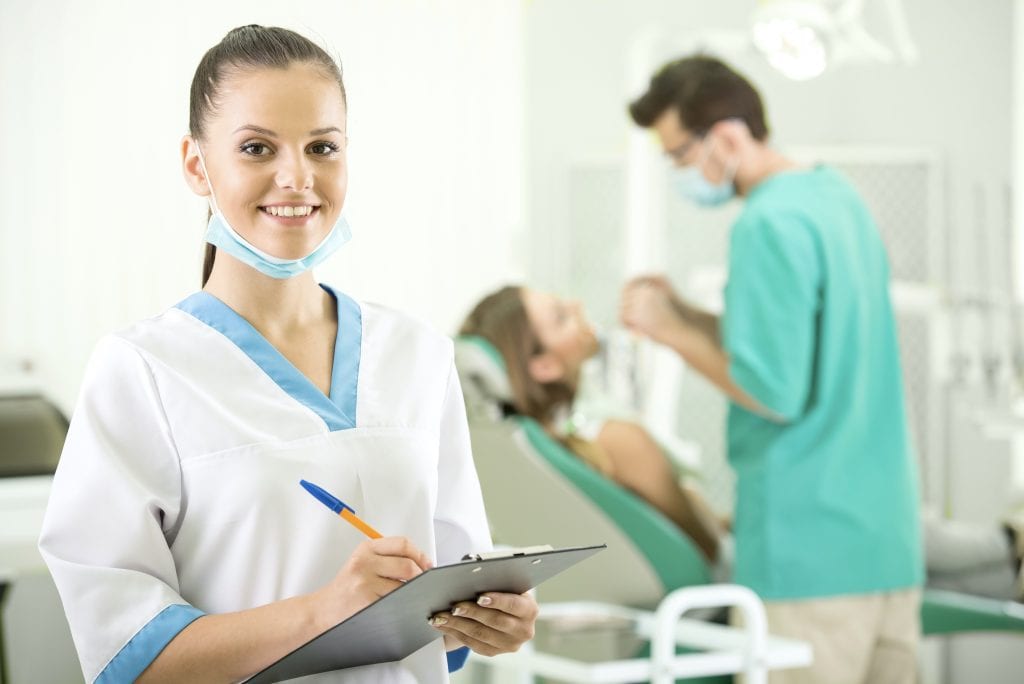Update: Dentistry & Covid-19
(Fall 2020)
by
Bill Claytor, Jr., DDS, MAGD
N.C. Caring Dental Professionals
Associate Director

As the Summer of 2020 approached, social unrest and a contentious presidential race permeated the land only adding more stress to our lives. We saw a volatile stock market which only exacerbated the uncertainty of the future. Increased tensions among family members, concerns about whether the Fall school year would be in person or continue online, plus continued job losses and uncertainty became real issues that led to more stress and burnout. Stress that is unaddressed can make one develop irrational thoughts, causing our emotions to become unmanageable while acting in a self-defeating matter. This was reflected in increased alcohol and drug use to relieve the stress and anxiety associated with the moment. Navigating through the COVID-19 pandemic became a fearful journey into the future for many.
Numerous dental offices from May through August reported a healthy rebound of production and patients returning to our offices, mainly due to patients needing care while offices were closed in March and April. In early June 2020, the Health Policy Institute (HPI) of the American Dental Association reported that polling shows a “robust, sustained rebound in dental care” as practices started to re-open. However, some indications point to that trend reversing going into December 2020 and into the first quarter of 2021. This downward movement is due to a resurgence of Covid-19 cases, hospitalizations and deaths, plus a lack of a time-tested and trusted vaccine. Hospitals in some states are considering going back to an “emergency only treatment” status due to this uncertainty.
On November 2, 2020, the American Dental Association’s Health Policy Institute released updated data about our offices (www.ada.org/hpi):
- Nearly 98.7% of dental practices in the U.S. were open.
- Almost 37.8% of practices report “open and business as usual” in terms of patient volume
- Almost 60.8% of practices report “open but lower patient volume than usual”.
- 71.4% of respondents stated that patient volume was 75% or more of pre-Covid-19 levels.
- 71.8% of practices state that the volume of patient collections was 75% or more of pre-Covid-19 levels.
- 91.0% of dentists are fully paying their staff.
- The amount of stress on all dentist respondents that had student loans state their stress level pre-Covid-19 was a 4.5, and as of November 2, 2020 it is a 5.7 (Scale: 1 – 10).
By mid-November, some of these numbers were trending downward due to the fear and reality of what is being called the “Big Dip” (that many are experiencing currently), where hygiene schedules are less booked and take a big downward trend in mid-September through mid-November 2020. This is due to the lack of 6 month hygiene appointment scheduling while offices were closed from mid-March to mid-May, 2020. This resulted in potentially decreased production. It is important to note that if the “Big Dip” during September through November, 2020 is not addressed and rectified now, it has a great potential to re-occur in March and April 2021 and recycle every 6 months into the future. Staff attention to contacting patients to reschedule and growing your practice during this difficult time is crucial to thriving. One possible solution would be to ask for help from a practice management professional.
Dentistry is also dealing with a lack of available dental hygiene workforce in some areas of the country. This has led to more innovative dental hygiene delivery systems, including utilizing a certified dental assistant who can do coronal polishing (if state dental laws allow) so that dental hygienists can concentrate on scaling and root planning. If implemented, caution is advised during Covid-19 to prevent extreme workloads on the dental hygienist. This may result in physical/emotional exhaustion since ultrasonics are currently not recommended for use due to aerosolized droplets. Beware if wrist or potential carpel tunnel-like symptoms develop with dental hygienists.
Finally, dentistry has historically been through difficult times in the past. In today’s continuing pandemic, we will survive and thrive but only if we are pro-active and seek help for our unique practice challenges.
